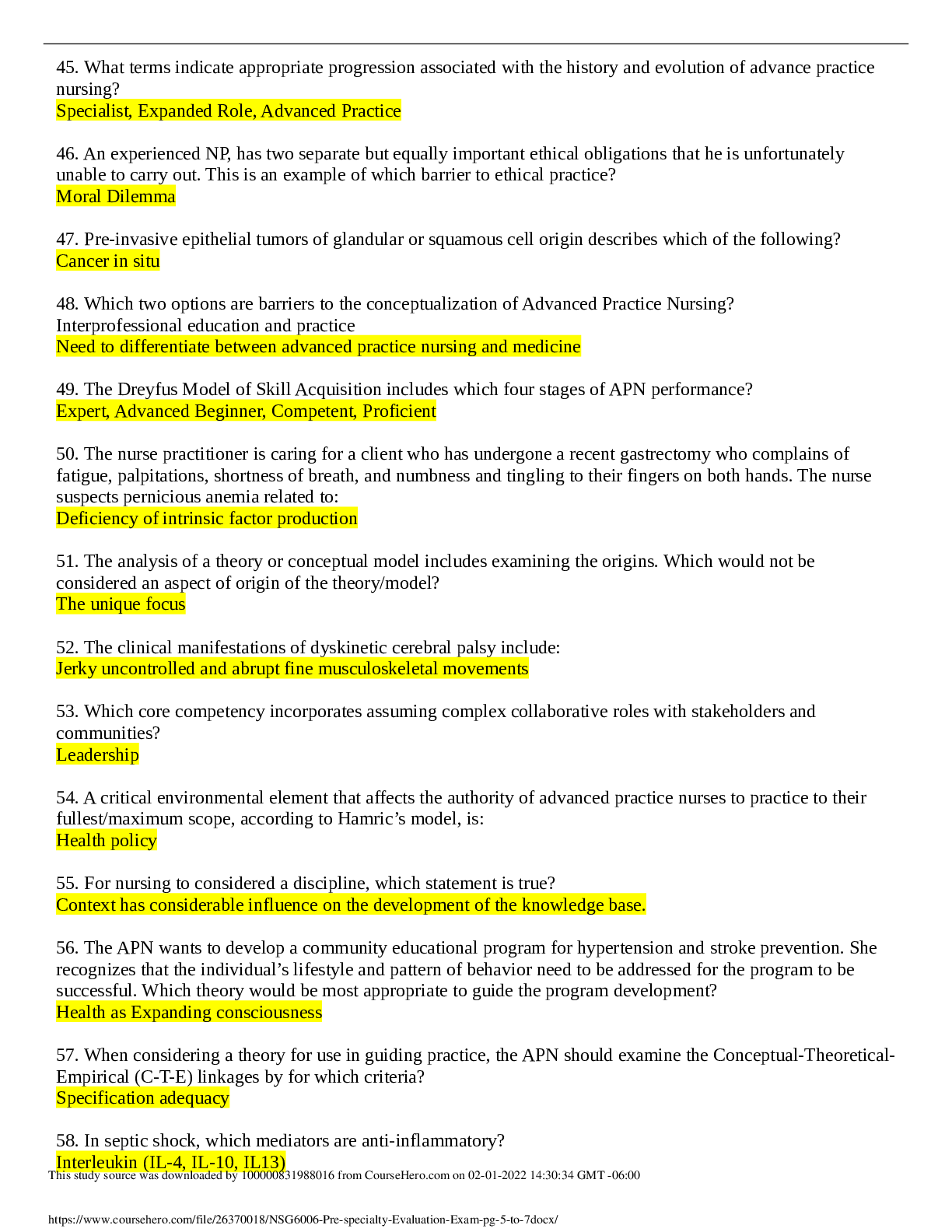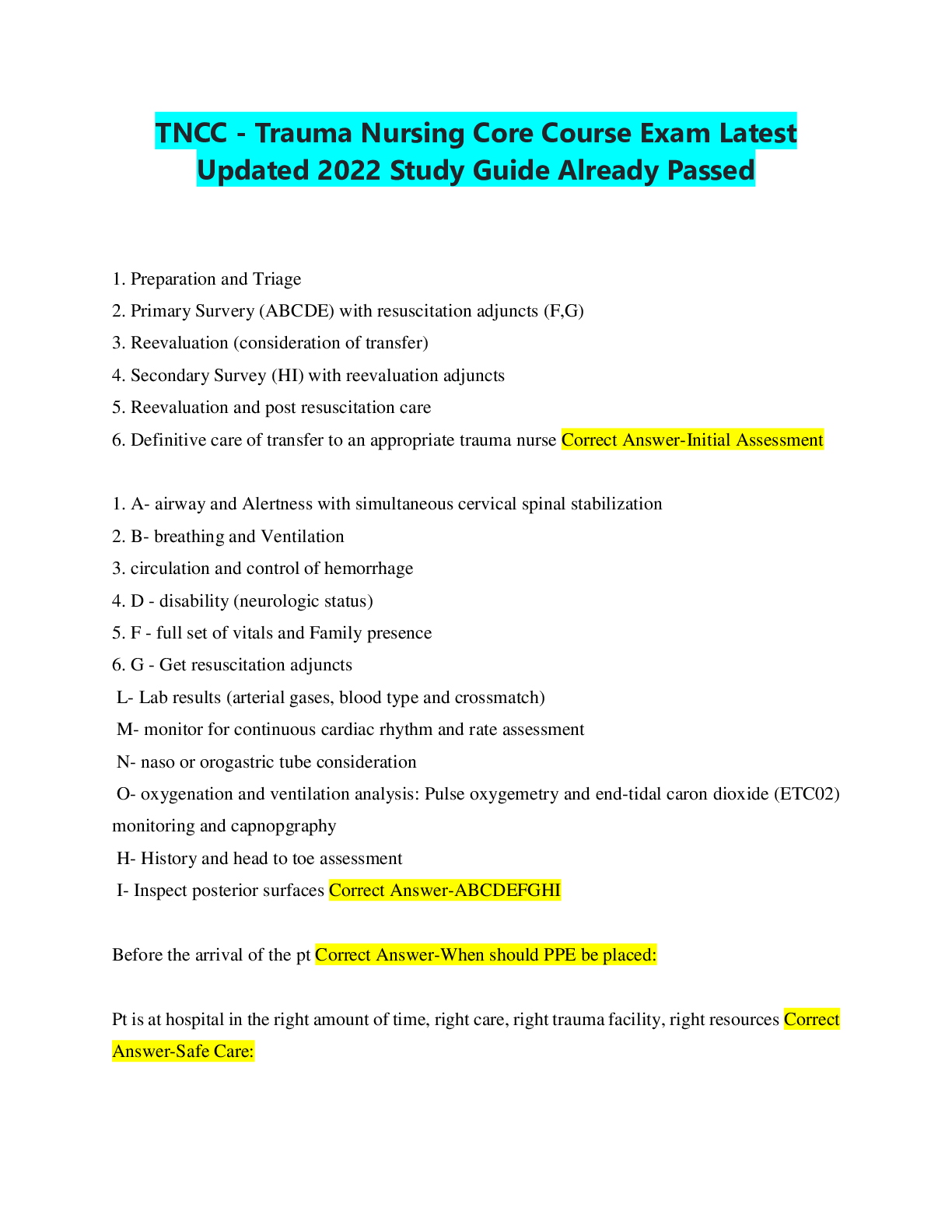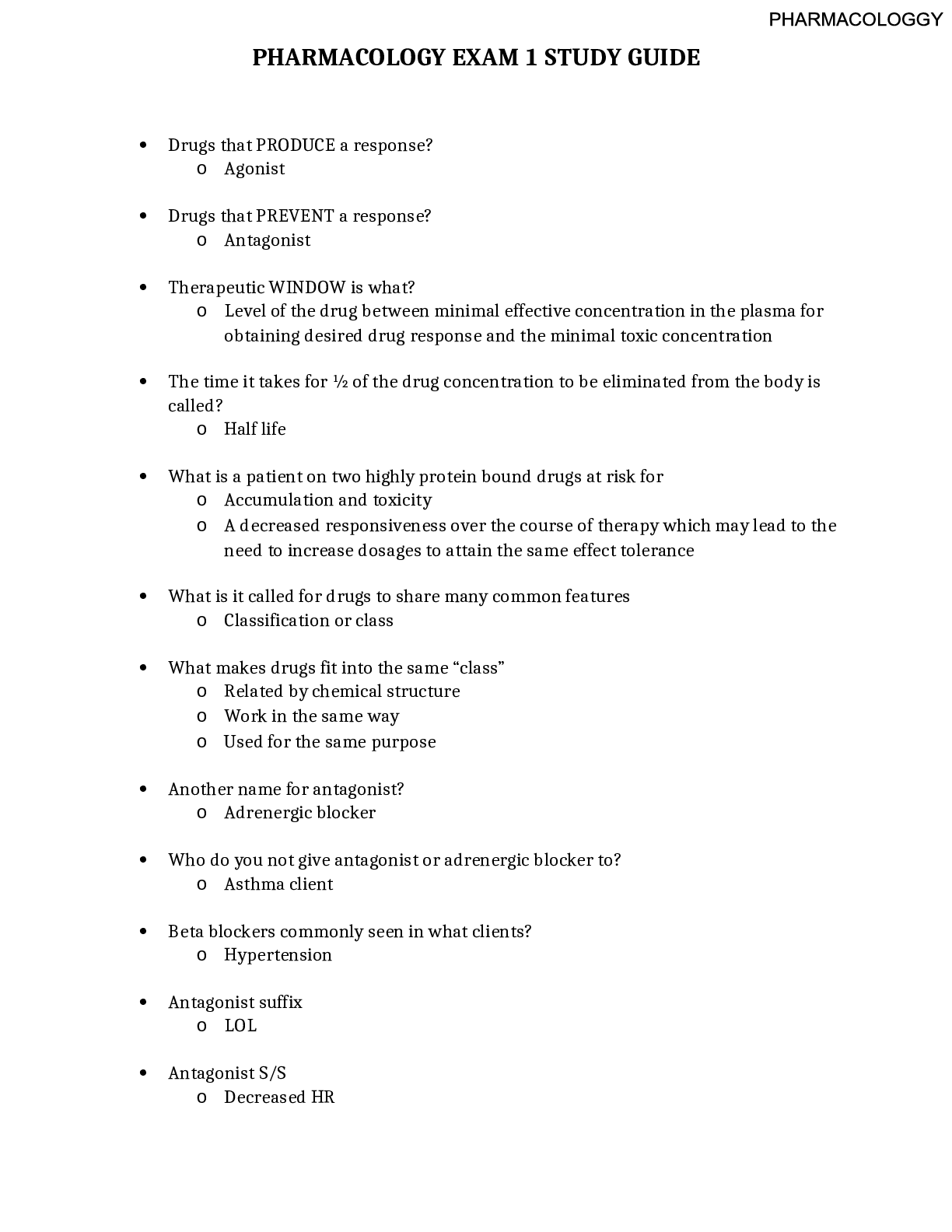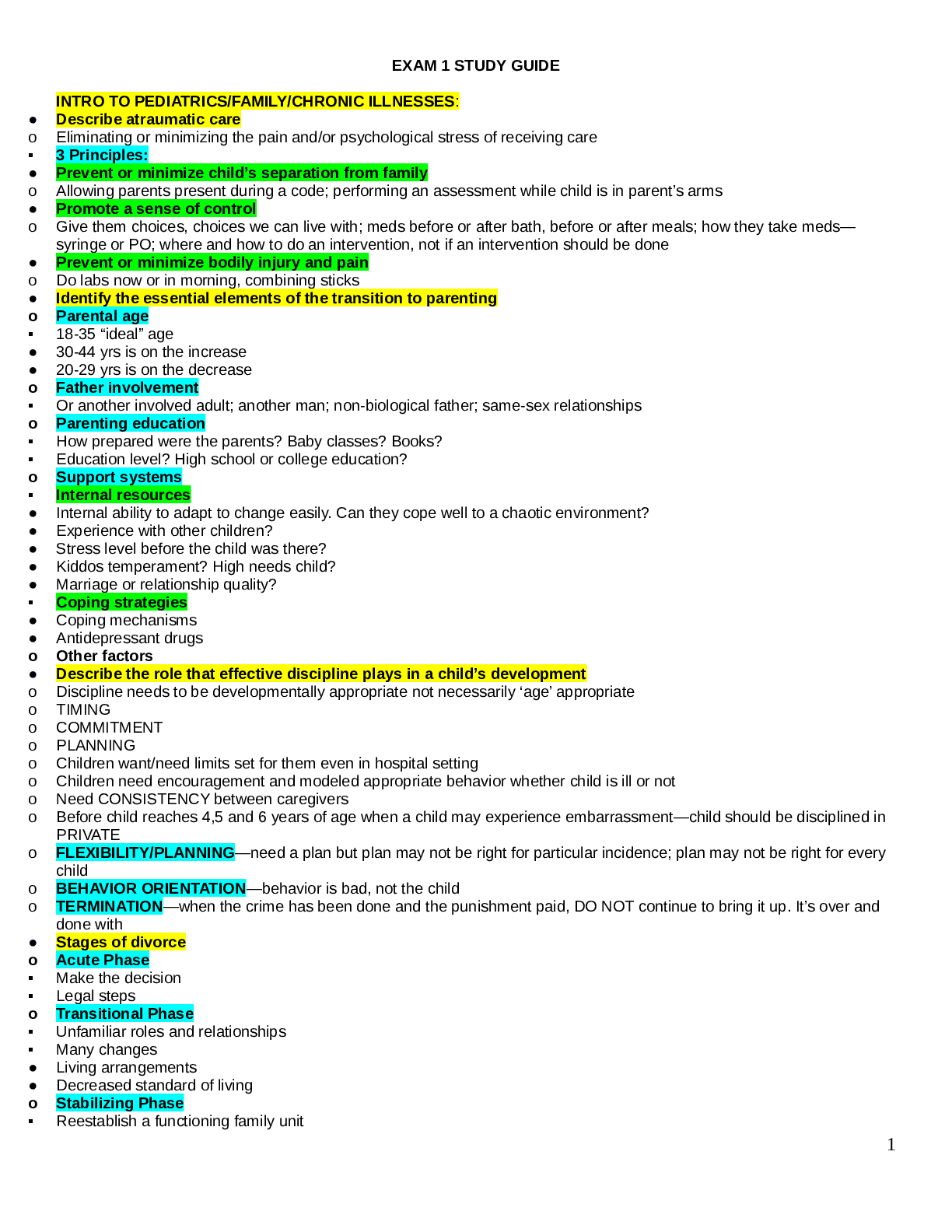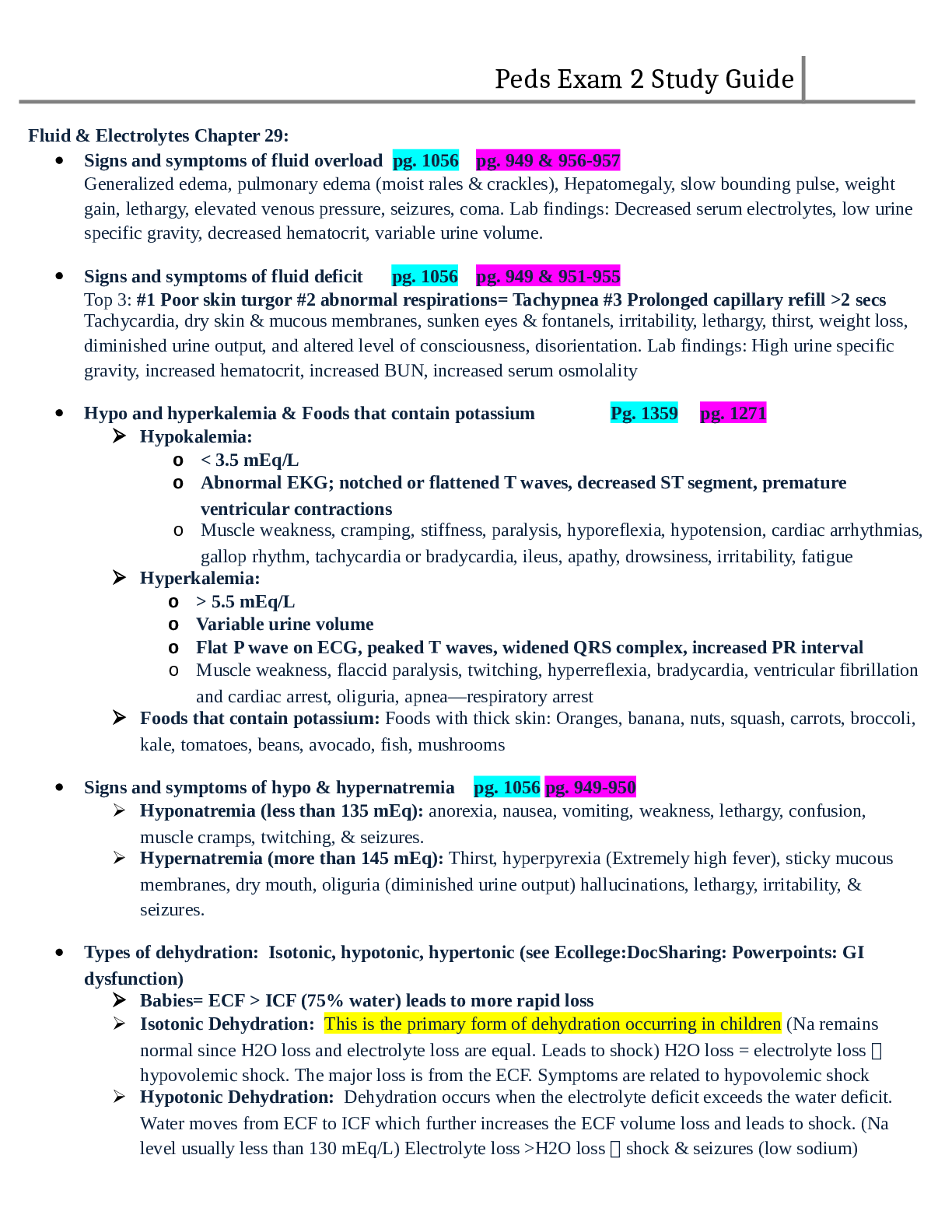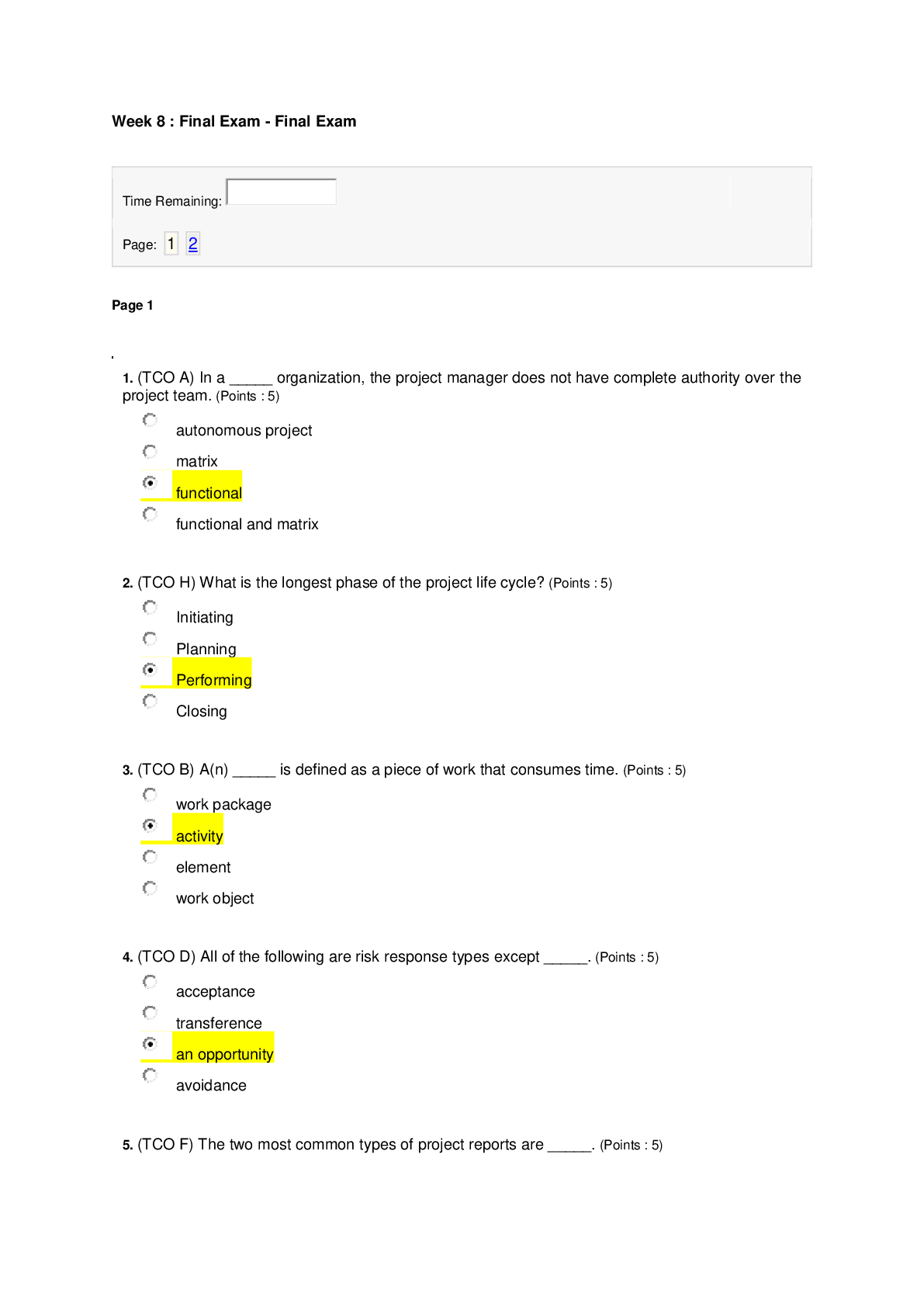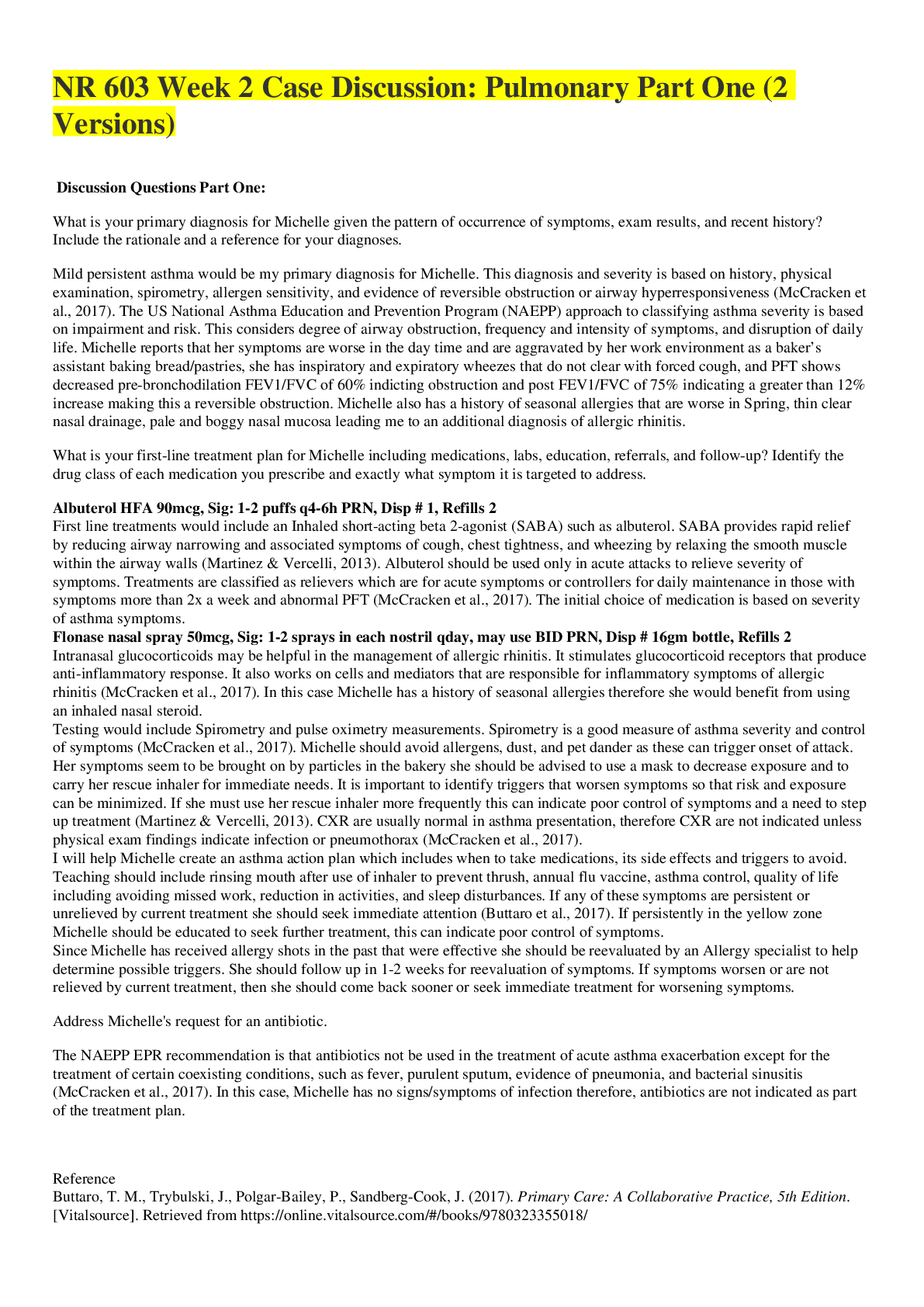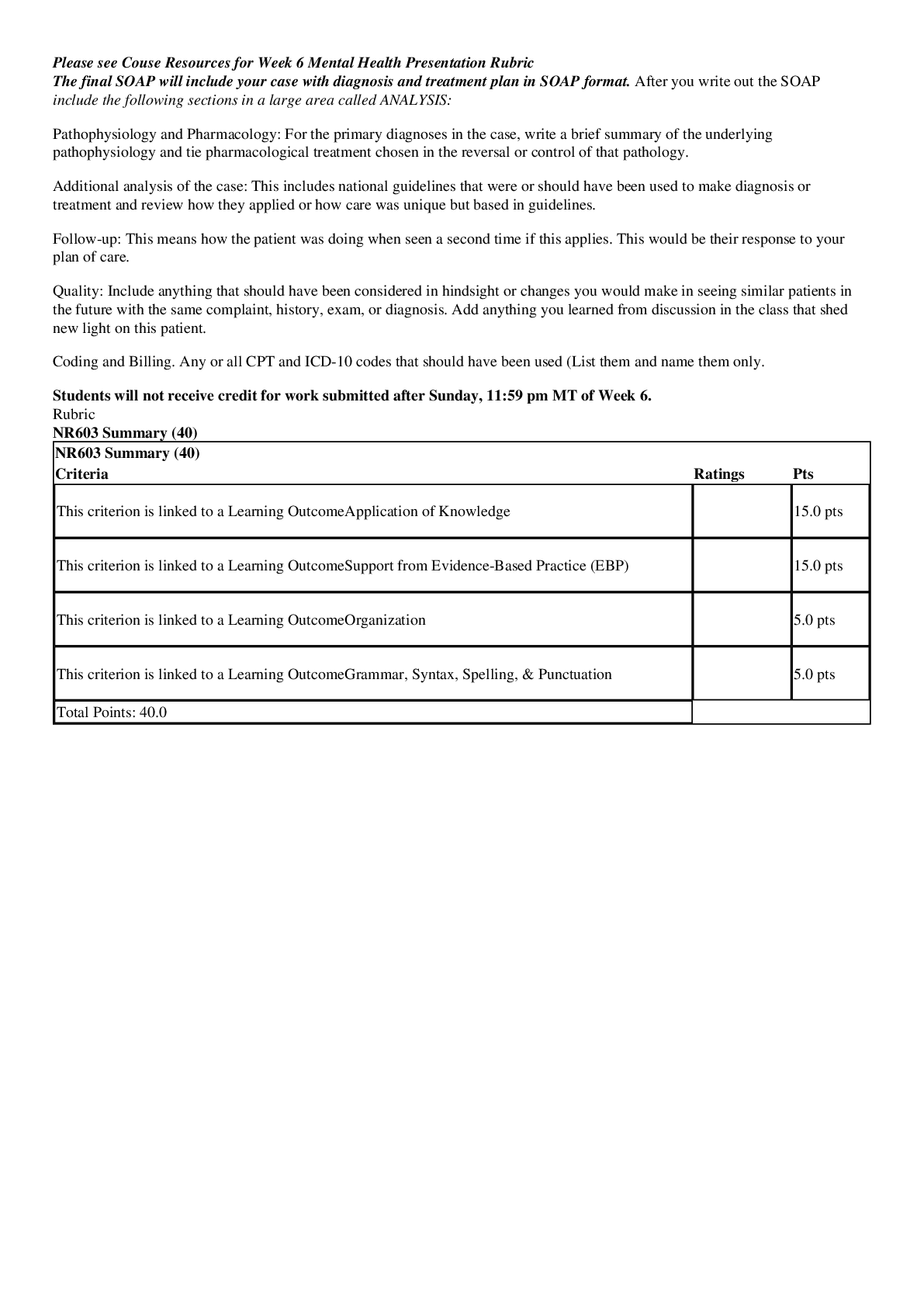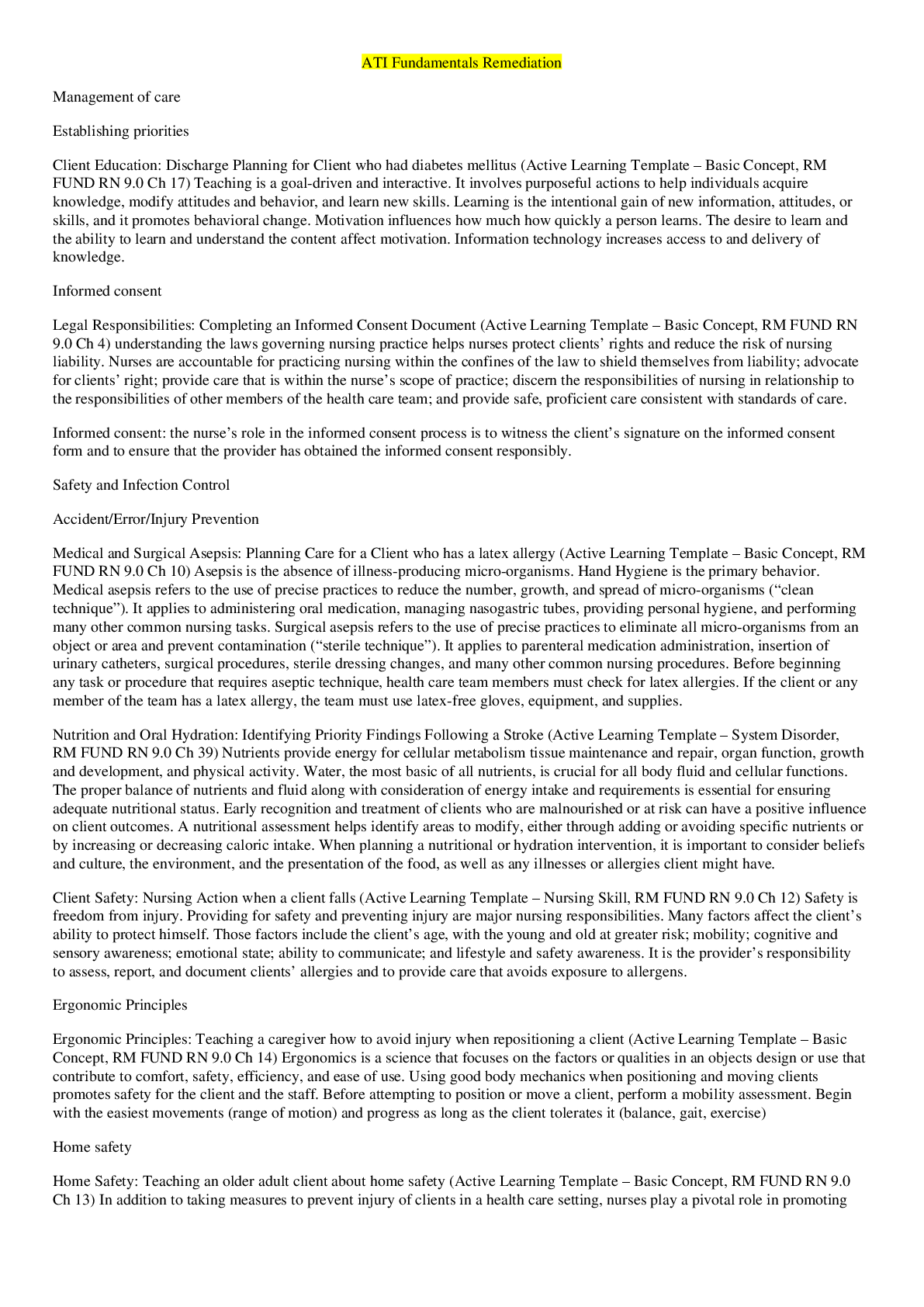*NURSING > STUDY GUIDE > Chamberlian NR507 final exam updated Rated A (All)
Chamberlian NR507 final exam updated Rated A
Document Content and Description Below
Chamberlian NR507 final exam 2016 Question 1. Continued therapy of pernicious anemia (PA) generally lasts how long? 6 to 8 weeks 8 to 12 months Until the iron level is normal The rest of one’s ... life Question 2. : What pulmonary defense mechanism propels a mucous blanket that entraps particles moving toward the oropharynx? Nasal turbinates Alveolar macrophages Cilia Irritant receptors on the nares Question 3. : The common hay fever allergy is expressed through a reaction that is mediated by which class of immunoglobulins? IgE IgG IgM T cells Question 4. : Which of the following describes how the body compensates for anemia? Increasing rate and depth of breathing Decreasing capillary vasoconstriction Hemoglobin holding more firmly onto oxygen Kidneys releasing more erythropoietin Question 5. : Obesity creates a greater risk for dehydration in people because: Adipose cells contain little water because fat is water repelling. The metabolic rate of obese adults is slower than the rate of lean adults. The rate of urine output of obese adults is higher than the rate of output of lean adults. The thirst receptors of the hypothalamus do not function effectively. Question 6. : Which hormone prompts increased anxiety, vigilance, and arousal during a stress response? Norepinephrine Epinephrine Cortisol Adrenocorticotropic hormone (ACTH) Question 7. : What is the treatment of choice for pernicious anemia (PA)? Cyanocobalamin by oral intake Vitamin B12 by injection Ferrous fumarate by Z-track injection Folate by oral intake Question 8. : Which sexually transmitted infection frequently coexists with gonorrhea? Syphilis Herpes simplex virus Chlamydia Chancroid Question 9. : During an infection, why do lymph nodes enlarge and become tender? B lymphocytes proliferate. The nodes are inflamed. The nodes fill with purulent exudate. The nodes are not properly functioning. Question 10. : Chvostek and Trousseau signs indicate which electrolyte imbalance? Hypokalemia Hyperkalemia Hypocalcemia Hypercalcemia Question 11. : What is the suggested mean blood pressure for an 8- to 9-year-old child? 104/55 mm Hg 106/58 mm Hg 112/62 mm Hg 121/70 mm Hg Question 12. : Stress-induced sympathetic stimulation of the adrenal medulla causes the secretion of: Epinephrine and aldosterone Norepinephrine and cortisol Epinephrine and norepinephrine Acetylcholine and cortisol Question 13. : Bronchiolitis tends to occur during the first years of life and is most often caused by what type of infection? Respiratory syncytial v [Show More]
Last updated: 2 years ago
Preview 1 out of 11 pages
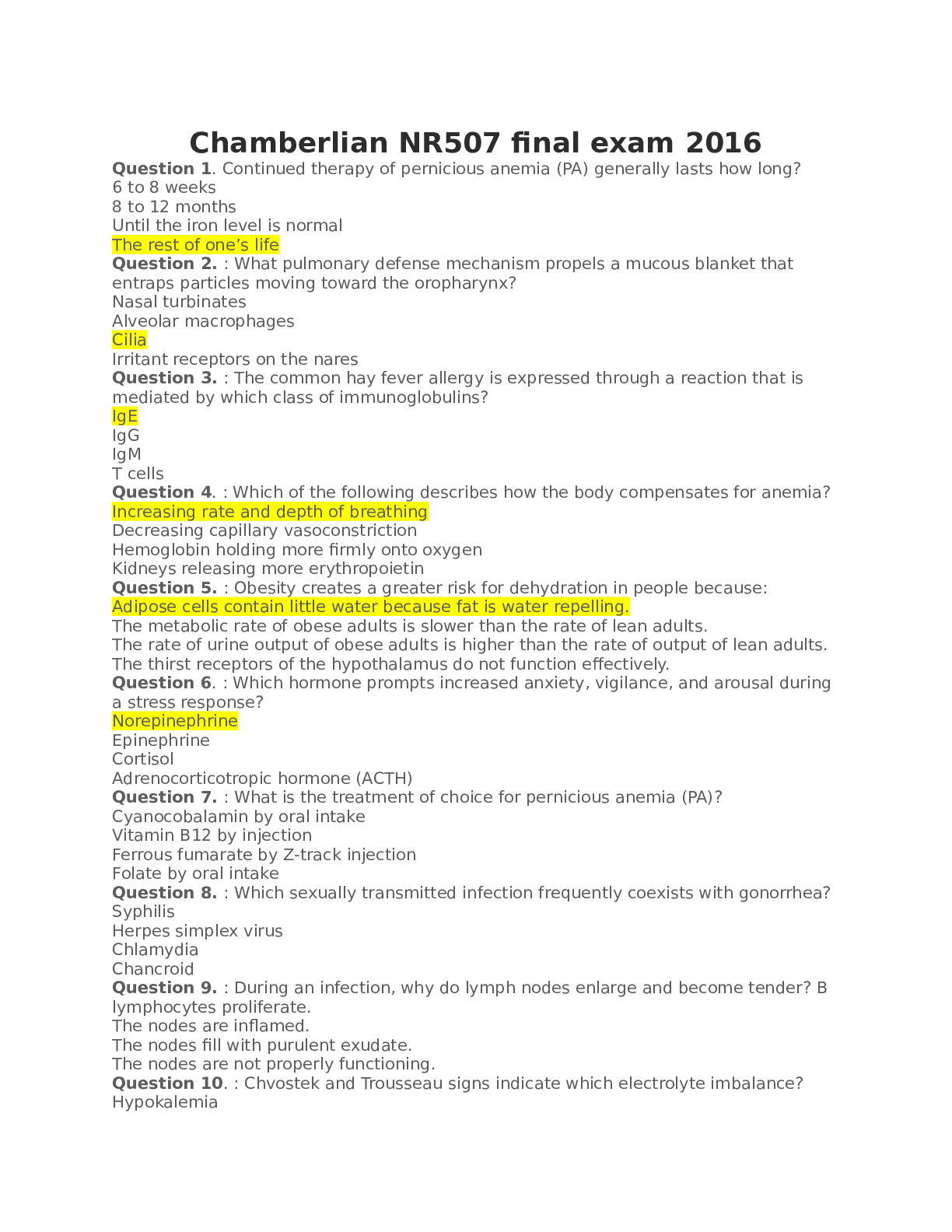
Buy this document to get the full access instantly
Instant Download Access after purchase
Buy NowInstant download
We Accept:

Reviews( 0 )
$12.00
Can't find what you want? Try our AI powered Search
Document information
Connected school, study & course
About the document
Uploaded On
Sep 30, 2021
Number of pages
11
Written in
Additional information
This document has been written for:
Uploaded
Sep 30, 2021
Downloads
0
Views
80




